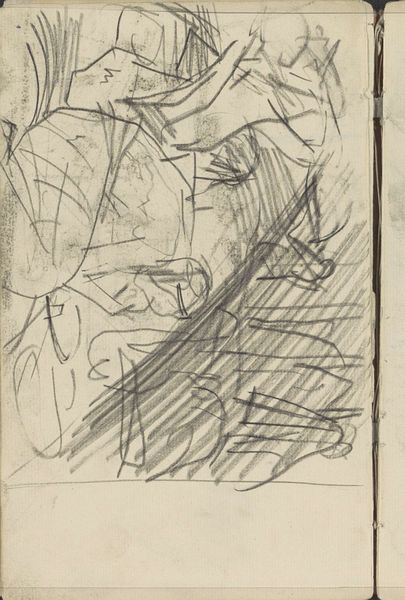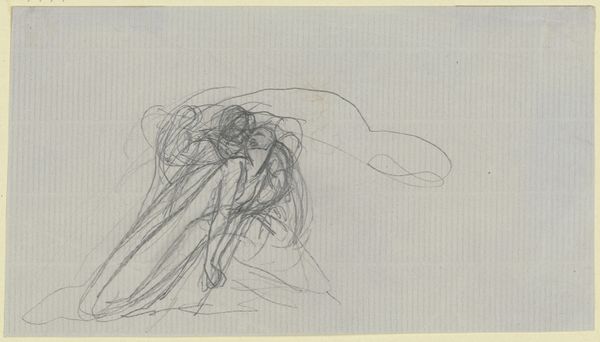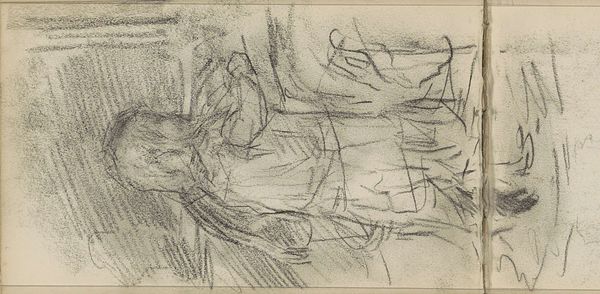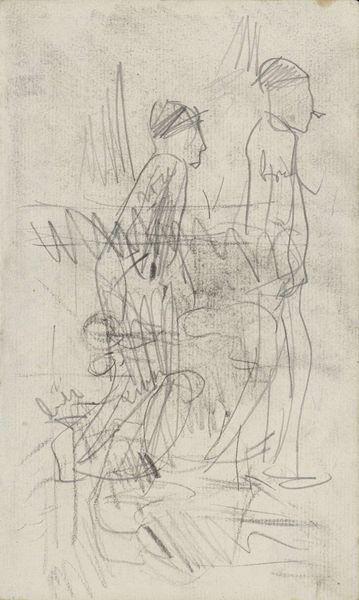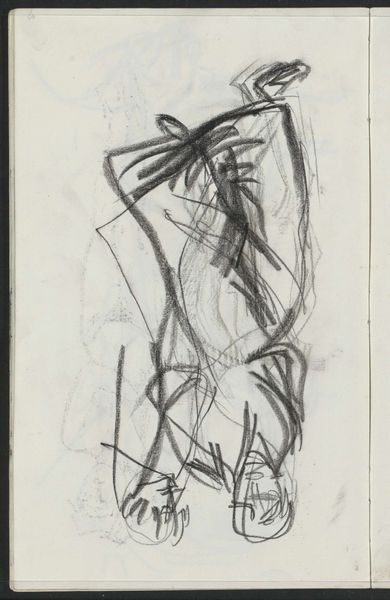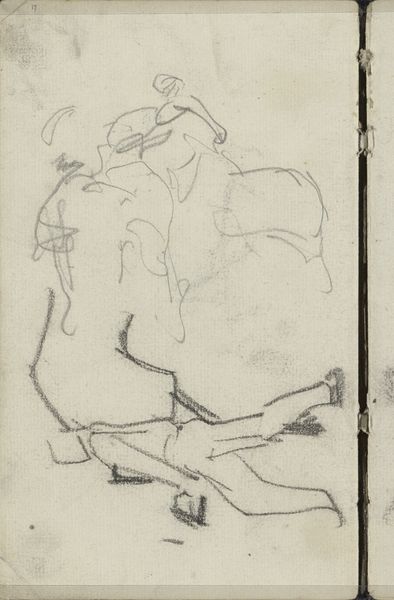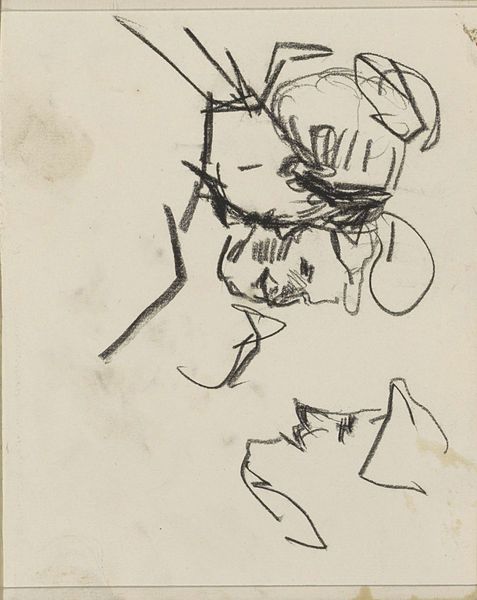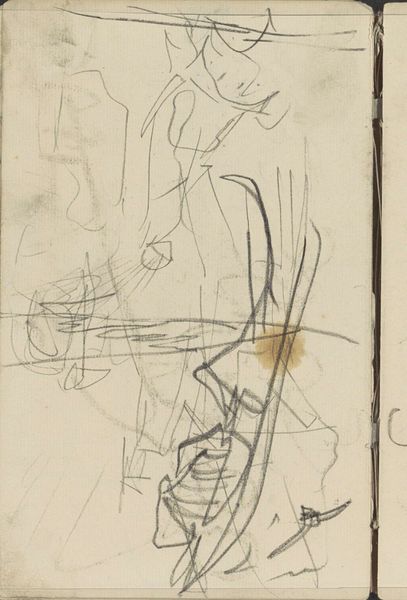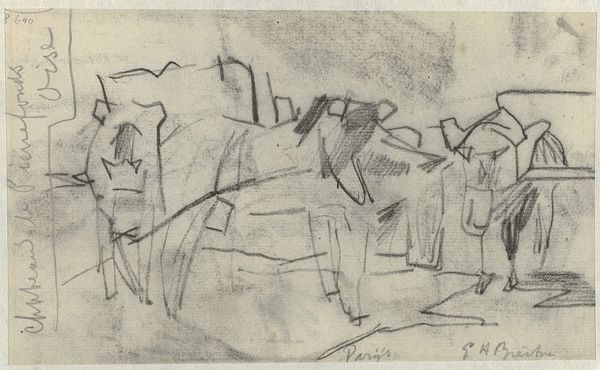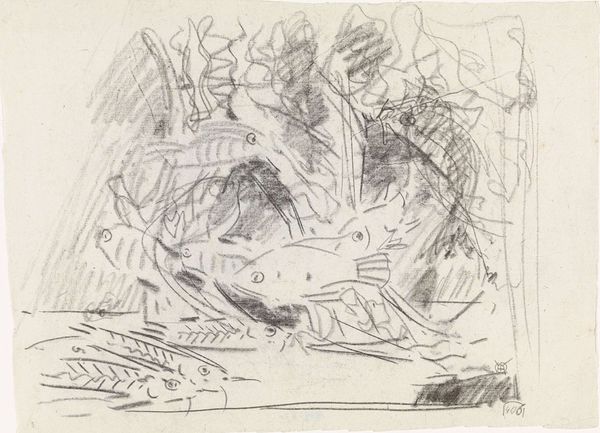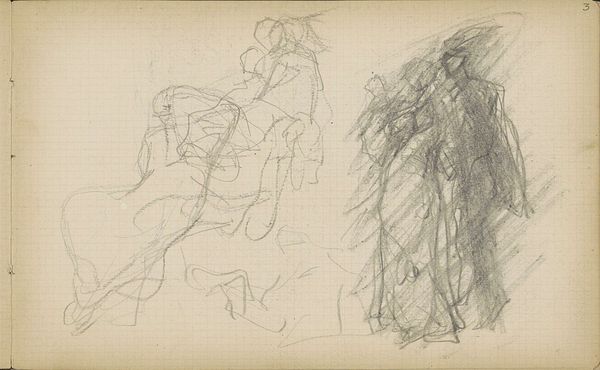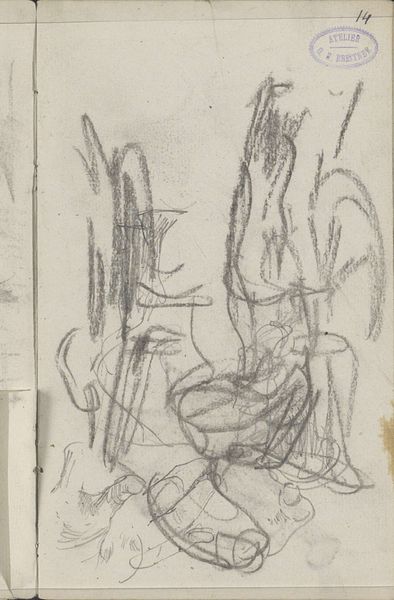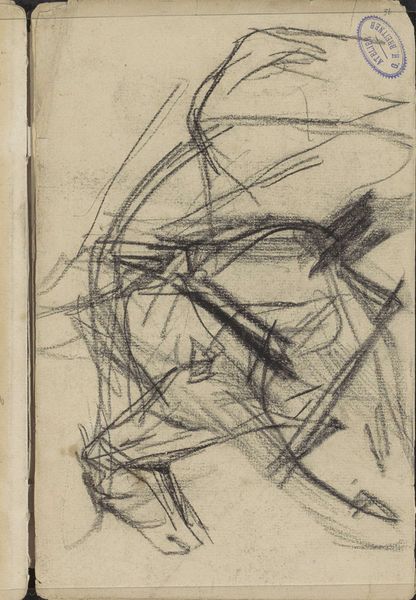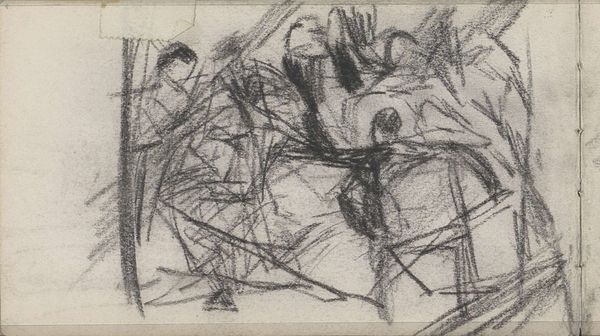
Copyright: Rijks Museum: Open Domain
Curator: George Hendrik Breitner’s "Zittende figuren," or "Sitting Figures," graphite and pencil on paper, thought to have been made sometime between 1886 and 1923. What are your initial thoughts? Editor: Chaos. Utter chaos. A swirl of graphite barely contained within the borders. There’s a restless energy to the mark-making itself. Curator: Yes, but even in the frenzy, I sense tenderness. Note the recurrent motif of children, rendered with what appears a caring hand. It feels as if Breitner is chasing the fleeting innocence of childhood. Editor: Fleeting is right! These are impressions more than studied poses, sketches trying to capture a gesture. Look at the density of layering in the lower left corner; the artist clearly labored on these, despite the casual air. Was this piece preparatory for something larger or significant? Curator: Knowing Breitner, and his involvement with the rise of Impressionism, I think we should consider it both an investigation of form and the immediacy of experience. Note, also, how his choice of graphite softens the figures. Editor: Absolutely. It underscores the quickness, the availability, the relative cheapness, in comparison to something like oil paint at the time. Breitner can work, erase, rethink in real time, right there on the street with children playing, rather than held up by studio production. It shows the democratisation of artistic practice in the modern era. Curator: That makes me wonder what types of social structures and memory are preserved by rendering these subjects through graphite. He must have also noted the fleeting presence of childhood; the piece could become a remembrance piece that many can identify with. Editor: Definitely. There is something universal within the chaos of material and lines; like anyone watching children run about them, but as the lines begin to become form; there’s an insight into social class and even material circumstance of raising children in late 19th Century Netherlands. A document constructed via pencil and paper. Curator: It's a glimpse into another world, capturing gestures of those who had yet to carry the weight of their social circumstance, or become accustomed to a life of labor. Thanks for the perspective. Editor: My pleasure. It's always amazing to me that materials can hold this history and the art produced during this time offers such opportunity to better interpret life around me.
Comments
No comments
Be the first to comment and join the conversation on the ultimate creative platform.
